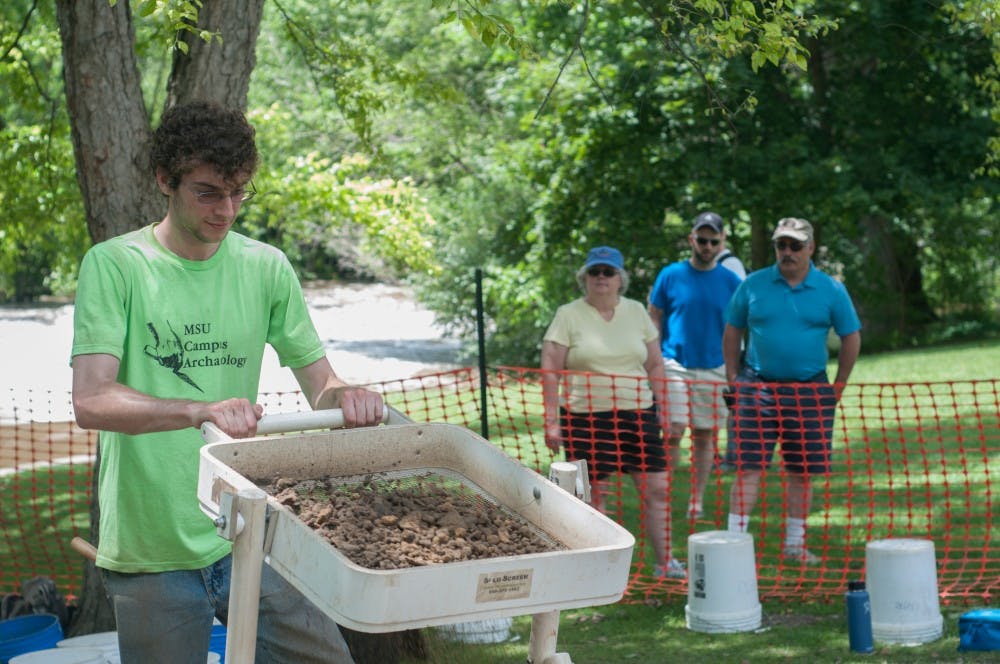MSU has been around since 1855 and has had a long and rich history. A lot of that history is buried beneath us.
The Campus Archaeology Field School is a five-week class at MSU that teaches students how to dig and find artifacts. The class also gives them a chance to use these skills by actually excavating different sites around MSU.
The class’s current excavating site is behind the Hannah Administration Building, right north of the Red Cedar River, and they have been finding a lot of different items that show what used to be there.
“We’ve found a lot of broken glass, ceramics, metal like nails and stuff like that,” said Rebecca Albert, an anthropology and plant biology sophomore.
Lynne Goldstein, an anthropology professor and the teacher of the course, said a number of artifacts they’ve dug up at the site have had maker’s marks that allow them to date the object.
The items found by the field school might seem unimportant to those expecting buried treasure, but the artifacts are actually important in seeing what everyday life actually looked like, through the items people of the past used everyday.
“That’s what we try to get at, it’s the everyday stuff that people didn’t write down but that tells us a lot about people and what they do,” Goldstein said.
Some of the artifacts that the students find get to go up on display at the MSU Museum, and be seen by the visitors that go there.
“Any of the collections, the things we find, don’t belong to us, they don’t belong to the anthropology department, they belong to the MSU museum,” said Goldstein. “The way the university is set up, only museums can hold artifacts.”
The excavation being done on campus was started as a way for people to get a better understanding of the past and more specifically, MSU’s past. The artifacts at the current site, right north of the Red Cedar River, tell a lot about the history of the area and what used to be there.
“There used to be a faculty house that was between here and the library and after that faculty member died, it became a house that was used by the women’s home management program,” Goldstein said. “And then what we think happened is after they were going to tear it down, what they did is they dragged all the debris from the house over here, and so while in one sense it’s not all in place we are finding everything we have here is very tightly dated.”
The field class is important for students who want to go into Archaeology, as they would need actual experience before being able to get a job, but it is also important for students who might not know if they want to do it or not.
“When you’re an anthropology major trying to figure out what you like its really good that we have a class like this where you actually get to go out and do archaeology,” said Alissa Lyon, an anthropology and French senior. “We do have archaeological courses but sitting in class really doesn’t give you the sort of experience to say with any confidence, ‘Yes, I want to do archaeology.'”




